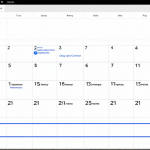PLM software transforms product development by centralizing data, streamlining workflows, and uniting multidisciplinary teams. It ensures traceability and compliance while accelerating innovation and reducing costs. Integrating sustainability, PLM helps design products with lower environmental impact from the start, making it an essential tool for companies aiming to develop efficient, compliant, and eco-friendly products throughout their lifecycle.
Overview of Product Lifecycle Management (PLM) Software
PLM software – Learn more about this topic – encompasses tools that streamline enterprise product data management and coordinate product development activities. It supports the entire product lifecycle, from conception to retirement, by providing functionalities like digital product development platforms, collaborative design tools, and centralized product data repositories.
This might interest you : Revolutionize your blogging with ai seo for maximum impact
Historically rooted in managing CAD files, PLM has advanced to facilitate cross-departmental collaboration and ensure data integrity among dispersed teams. It enables version control for engineering data, change management, and compliance tracking, minimizing risks and error.
Leading software, such as Siemens’ Teamcenter and Windchill, offer scalable, cloud-based solutions that integrate manufacturing process data with product configuration management. This integration accelerates product-to-market cycles, improves quality, and ensures adherence to regulations.
Also to read : How is the UK enhancing cybersecurity with high-tech solutions?
Understanding the core PLM tools and their capabilities helps organizations optimize workflows, reduce costs, and promote sustainability throughout the product’s lifecycle.
Core Features and Benefits of PLM Systems
Collaborative design tools remain pivotal in product lifecycle management solutions, fostering seamless cross-functional team collaboration from concept through production. By integrating advanced collaborative design tools, PLM software allows global product development coordination, enabling designers, engineers, and suppliers to iterate in real time, which sharpens decision-making and minimizes costly miscommunications.
Central to efficient workflows is the centralized product data repository. This single source ensures enterprise product data management remains trustworthy, supporting integrated CAD data management and rigorous version control for engineering data. Teams benefit from secure product data sharing, meaning all stakeholders work from up-to-date, accurate information—reducing duplicate effort and simplifying change management in product development.
The importance of change management in product development cannot be overstated. Automated engineering change order automation, compliant with industry standards, secures traceability and compliance management. Features like digital bill of materials management, design-to-manufacture traceability, and lifecycle cost analysis empower organizations to adapt to shifting market or regulatory demands. These tools accelerate product-to-market cycles and reduce the risk of errors during release phases.
Leading PLM Solutions and Future Trends
Cloud-based product data solutions and scalable product management systems are redefining modern product lifecycle management. Solutions like Windchill, FlexPLM, and Arena from PTC, and Teamcenter and Mendix from Siemens, serve as robust digital product development platforms. These platforms seamlessly connect design, engineering, and manufacturing teams through a centralized product data repository, enhancing collaboration with integrated CAD data management and version control for engineering data.
Digital twin integration represents a significant shift, enabling real-time monitoring by mirroring a product’s digital blueprint with sensor-based updates from actual usage. As manufacturing process integration and supplier collaboration software evolve, organizations experience heightened change management in product development and better compliance management automation.
Looking ahead, AI-driven innovation management software and IoT connectivity will further improve product configuration management and global product development coordination. The future of digital product development platforms will focus on lifecycle cost analysis, real-time product data monitoring, and advanced simulation data management, empowering manufacturers to rapidly adapt, automate regulatory compliance, and ensure data integrity—unlocking new layers of efficiency through robust, customizable product lifecycle tools.






